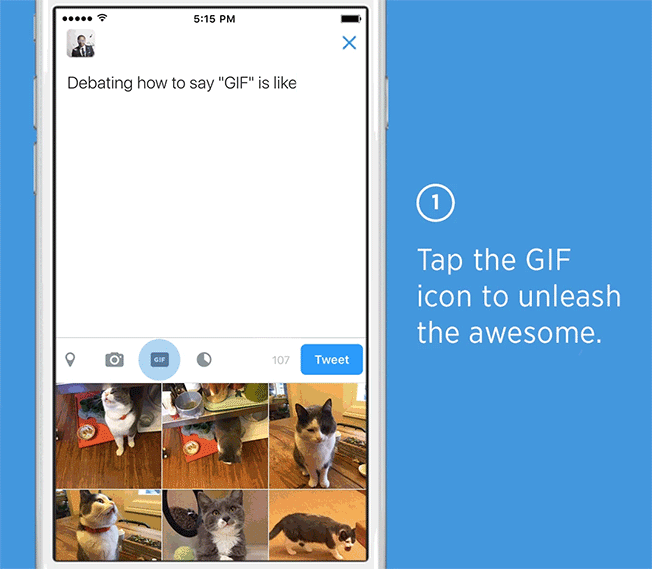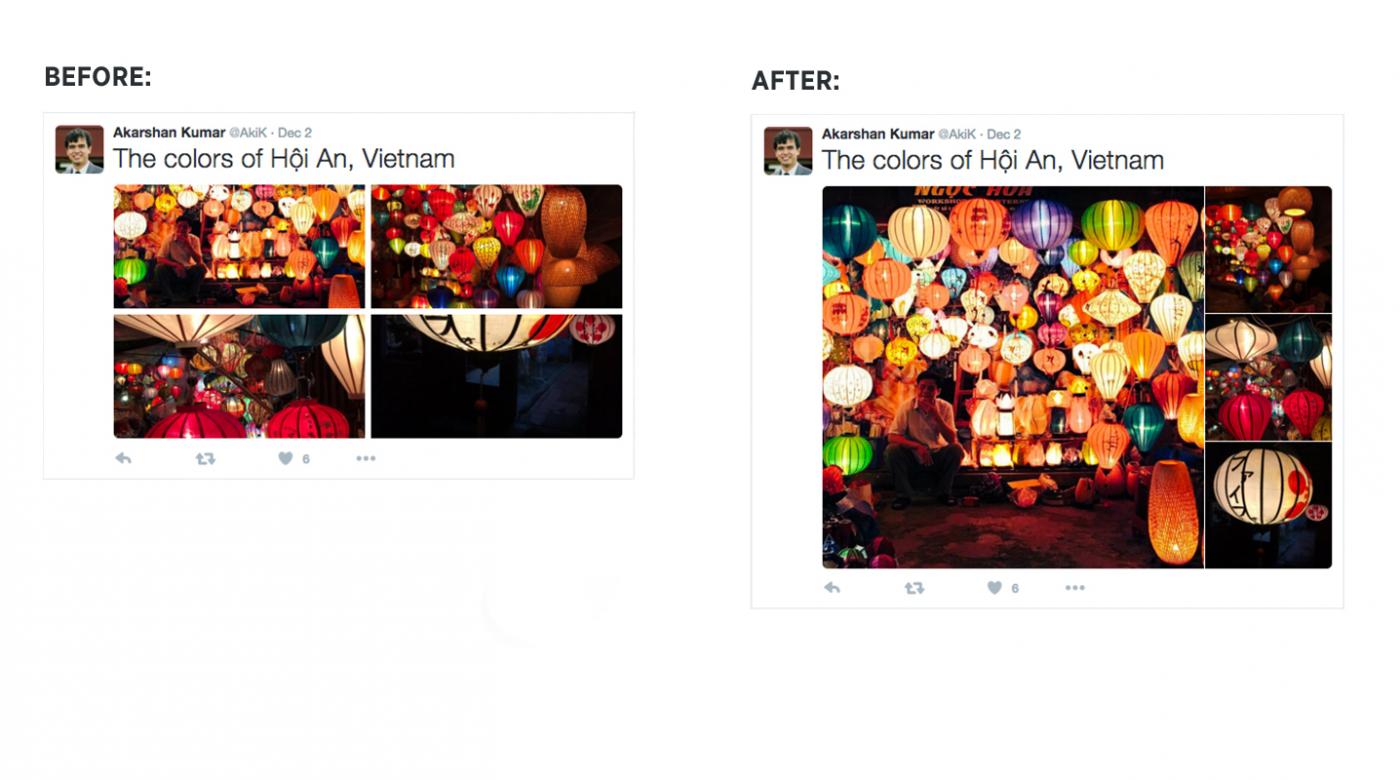
In an industry fixated on rapid growth, any slowdown in user acquisition or monitization sounds alarms. And Twitter, whether it likes it or not, has been sounding a lot of them lately.
Not only is it facing stagnant monthly active user growth, but the revenue generated from those users has disappointed a market accustomed to steady tech progression. In the face of a negative narrative, the company has been quick to take action and has focused predominantly on changes geared toward the user.
Over the last six months, Twitter has made a collection of changes, small and big, to drive user engagement and improve the overall onboarding and experience of the platform.
We know how tough it can be to keep up with these types of updates, which is why we put together a handful of the more notable features and changes below. Marketers, take note.
7 New Twitter Features You May Have Missed
1) The 140-Character Count Loophole
As far as debates go, Twitter’s 140-character limit is about as contentious as the oxford comma. Some say the character limit on tweets is essential to Twitter’s identity. It secures Twitter in place as one of the fastest available ways for ideas to spread. Others are ready to see it lifted, arguing that removing the 140-character cap would open Twitter up for a new and engaging range of content and possibly new users. One area where the pain of the character cap is particularly sharp is in adding media to your tweets.
By default, media links can take up 23 characters in a tweet, which is about 16% of your allotted characters. No small portion. That said, images are a boon for interactivity on your tweets: HubSpot conducted a study and found that tweets with images resulted in 18% more clickthroughs and 150% more retweets.

Image Credit: HubSpot & MDM
This week Twitter announced that soon media (e.g., images, polls, videos) attached to tweets will no longer count against your 140-character count. The same rule would apply to the @handle when replying to someone else’s tweet.
This update makes a couple of changes to the way replies and retweets are handled. Users will no longer have to add a character prior to a reply — for example, “.@meghkeaney” — to ensure their reply is seen by all followers. Not to mention, users will be able to retweet their own content if they want to add a thought to a previous post.
2) Accessible Images
Back in October, Twitter CEO Jack Dorsey made a public appeal to developers to submit ideas for product enhancements:
Developers on Twitter: please tweet your ideas and requests using hashtag #helloworld. We’re listening!
— Jack (@jack)
October 21, 2015
One of the ideas generated out of that invitation focused on making Twitter more accessible to users who are visually impaired. In other words, people using Twitter’s iOS and Android apps can now add alt text descriptions to images within tweets. Websites have long used alt text to help visually impaired visitors understand the messages conveyed by images using assistive technology like a screen reader or Braille display.
Accessible images has to be set up at the user level, a drawback for it gaining mass adoption, but it’s easy enough to set up. In an Android or iOS device, go to your Twitter settings (the gear icon) and follow these steps:
- Tap Accessibility.
- Next to Compose image descriptions, turn that feature on.
- From there, when you add an image to your tweet just tap Add description to insert descriptive text.
Adding accessibility may seem like a win for a small population, but it’s a best practice across the board for businesses and organizations looking to grow their audience and do the right thing.
3) The Connect Tab
In the early days of Twitter a friend who had just joined told me she didn’t get it. She had followed a bunch of news organizations and recommended accounts but it just felt like a news ticker to her.
“When does this get interesting?” she asked.
It was only when I sent her a custom list of people to follow whom I knew she’d like that the value started appearing. If Twitter wants to expand its user base — as a world of investors keep telling them they must — it needs to make it easier to get to that first moment of value.
This May, Twitter took the hint and reimagined the experience of finding people to follow. They released the Connect tab, a new feature that allows you to scan your contacts for people to follow and provides custom recommendations based on your location, activity, existing follower profile, and major interest accounts.

Image Credit: Twitter
Lizzy Plaugic, news editor at The Verge, calls this a smart move for Twitter: “If you’re one of Twitter’s many users who only follows 30 random kids you went to high school with, your timeline is probably stagnant and uninteresting,” she says. “By bumping up the number of people you follow, Twitter is hoping to make your feed something you actually want to look at.”
4) ‘Go Live’ Button for Periscope
Facebook has bet big on live streaming video, giving it its own tab in the mobile app and prioritizing live streams within the newsfeed. As a result of this and the natural appeal of the feature, live streaming videos see 10x the engagement on Facebook as other posts.
Twitter, which acquired Periscope last year, has been slower to prioritize this type of format. All signs point to that changing however. Beginning with Android phones, (see Android fans, sometimes you get things first) a small percentage of users will begin to see a “go live” button when they compose tweets. This button connects to Periscope and enables users to broadcast directly through Twitter.
This feature expands the content types marketers and content creators have to play with. Instead of having a “Tweetstorm” or a complicated Twitter Q&A, user can use live streaming to compile and publish longer form thoughts and responses. This also keeps the clutter down on Twitter feeds and can garner engagement in a live — and arguably more compelling — video format.
The ability to quickly go live is important for Twitter. In a recent earnings statement, the company explained: “We’re focused on what Twitter does best: live. Twitter is live: live commentary, live connections, live conversations. Whether it’s breaking news, entertainment, sports, or everyday topics, hearing about and watching a live event unfold is the fastest way to understand the power of Twitter.”
5) Native GIF Search
Even though this list isn’t weighted for significance, it took real willpower not to place this at number one. As someone whose reliance on GIFs is beyond description, this feature release was a big one for me. In 2015, people shared more than 100 million GIFs on Twitter. When you think about the steps it previously took to share an animated image on Twitter, that number is even more impressive.
Previously you had to leave Twitter, search for the appropriate GIF on any number of GIF search engines, save that image, go back to Twitter, recompose your tweet, and finally, upload the image. Today, with Twitter’s new GIF feature, you just click a button and conduct the search there. No saving or uploading needed.

Image Credit: Twitter
(By the way, if you like GIFs, I highly recommend this post by my colleague. It’s a fascinating history and analysis on why exactly GIFs became so popular.)
6) The Switch to Uncropped Photos
Twitter may have started as a text-based platform, but images are the source of some of its top engagement. That’s why the news that Twitter had adjusted its image size requirements to not force-crop most images came with such praise. The resulting experience means that Twitter is more visual and engaging right off the bat. See the before and after shots provided by Twitter below:

Image Credit: Twitter
Along with the uncropped photo update, Twitter also introduced a new view for multi-photo displays. This update allows users to see even more of the individual photos included in a collage.

Image Credit: Twitter
7) Increased Anti-harassment Features
One of the most serious complaints against Twitter is how easily harassment can spread and exacerbate on the network. Historically, tweets aimed at threatening or scaring individuals on Twitter have gone unfettered and caused a number of users to delete their accounts or even fear for their safety. In the last six months, Twitter has begun to respond to harassment and threats on the network with a series of features and services aimed a keeping people safe. These additions include:
- Clearer definition of abusive behavior in the platform’s terms of service
- Stronger functionality for blocking, muting, and reporting abuse
- The launch of the Twitter Safety Center and the Trust and Safety Council
These updates are critical to ensuring Twitter stays a welcoming place for all users. In a leaked memo last year, former Twitter CEO Dick Costello underscored the importance of this move, saying:
I’m frankly ashamed of how poorly we’ve dealt with this issue during my tenure as CEO. It’s absurd. There’s no excuse for it. I take full responsibility for not being more aggressive on this front. It’s nobody else’s fault but mine, and it’s embarrassing.
We’re going to start kicking these people off right and left and making sure that when they issue their ridiculous attacks, nobody hears them. Everybody on the leadership team knows this is vital.”
In all the punditry on the current and future state of Twitter, most of the narrative to this point has focused on the competition. Twitter’s response, however, has been largely focused on its users. While some of these updates may seem small, in aggregate they signal a move to a much more intuitive user experience, fed largely by user feedback. Time will tell if this focus on fan-favorite features amounts to a measurable increase in usage and revenue.
What do you think about Twitter’s latest features? What else would you like to see? Share you thoughts in the comments.


